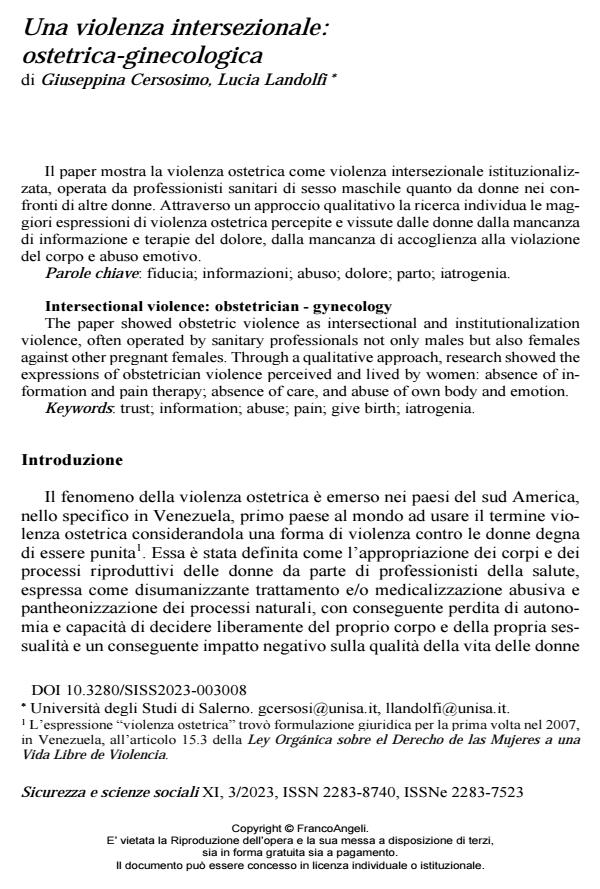Intersectional violence: obstetrician - gynecology
Journal title SICUREZZA E SCIENZE SOCIALI
Author/s Giuseppina Cersosimo, Lucia Landolfi
Publishing Year 2024 Issue 2023/3
Language Italian Pages 14 P. 114-127 File size 190 KB
DOI 10.3280/SISS2023-003008
DOI is like a bar code for intellectual property: to have more infomation
click here
Below, you can see the article first page
If you want to buy this article in PDF format, you can do it, following the instructions to buy download credits

FrancoAngeli is member of Publishers International Linking Association, Inc (PILA), a not-for-profit association which run the CrossRef service enabling links to and from online scholarly content.
The paper showed obstetric violence as intersectional and institutionalization violence, often operated by sanitary professionals not only males but also females against other pregnant females. Through a qualitative approach, research showed the expressions of obstetrician violence perceived and lived by women: absence of information and pain therapy; absence of care, and abuse of own body and emo-tion.
Keywords: trust; information; abuse; pain; give birth; iatrogenia
- De-normalizing Obstetric Violence in Italy: Digital Storytelling as Source of Information and Identification Giuseppina Cersosimo, Lucia Landolfi, in Violence Against Women /2025 pp.3819
DOI: 10.1177/10778012241292261
Giuseppina Cersosimo, Lucia Landolfi, Una violenza intersezionale: ostetrica-ginecologica in "SICUREZZA E SCIENZE SOCIALI" 3/2023, pp 114-127, DOI: 10.3280/SISS2023-003008